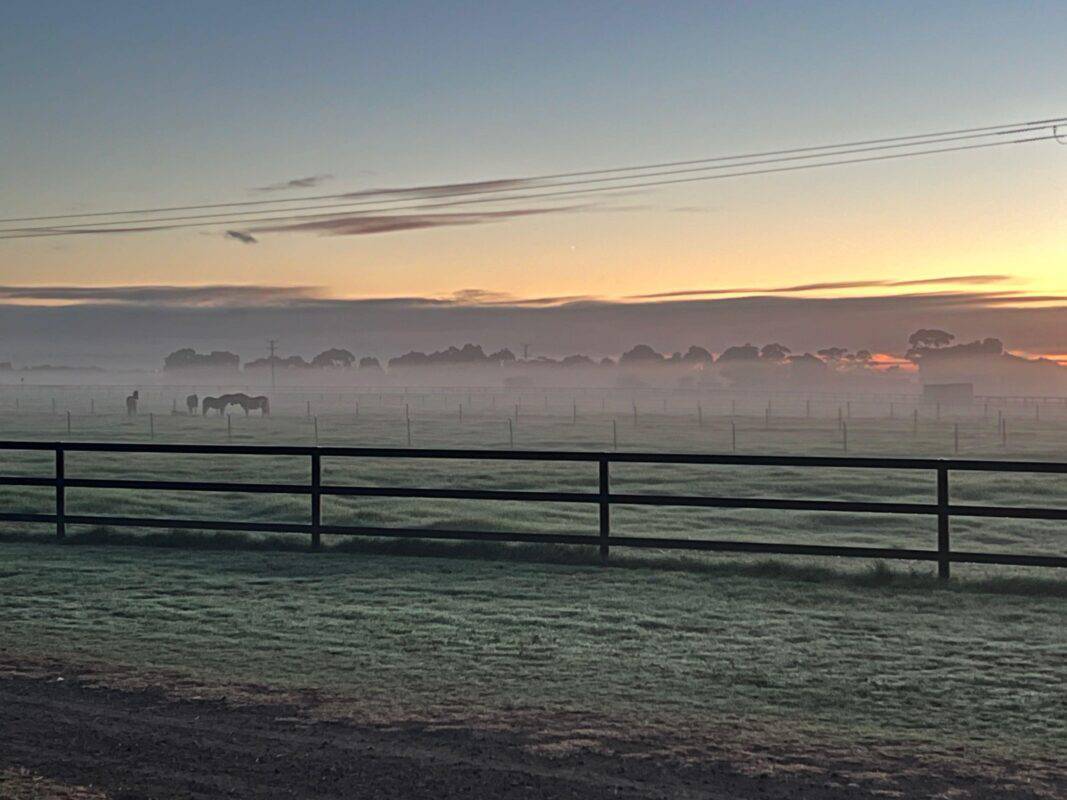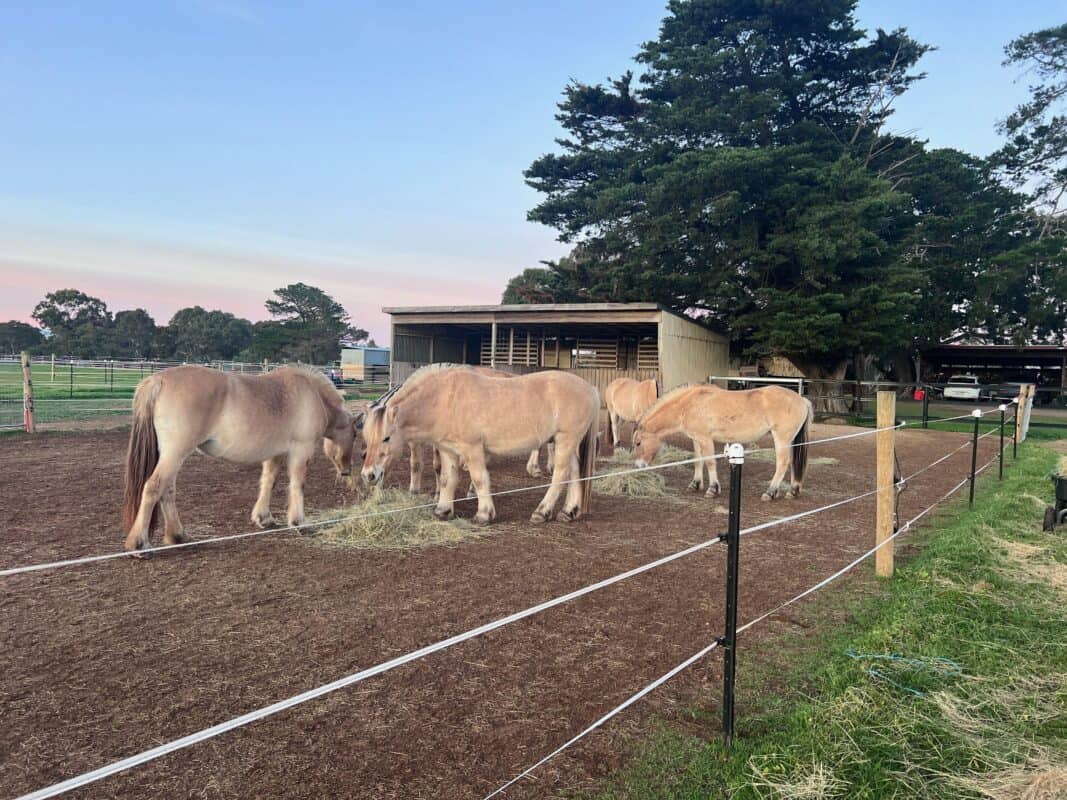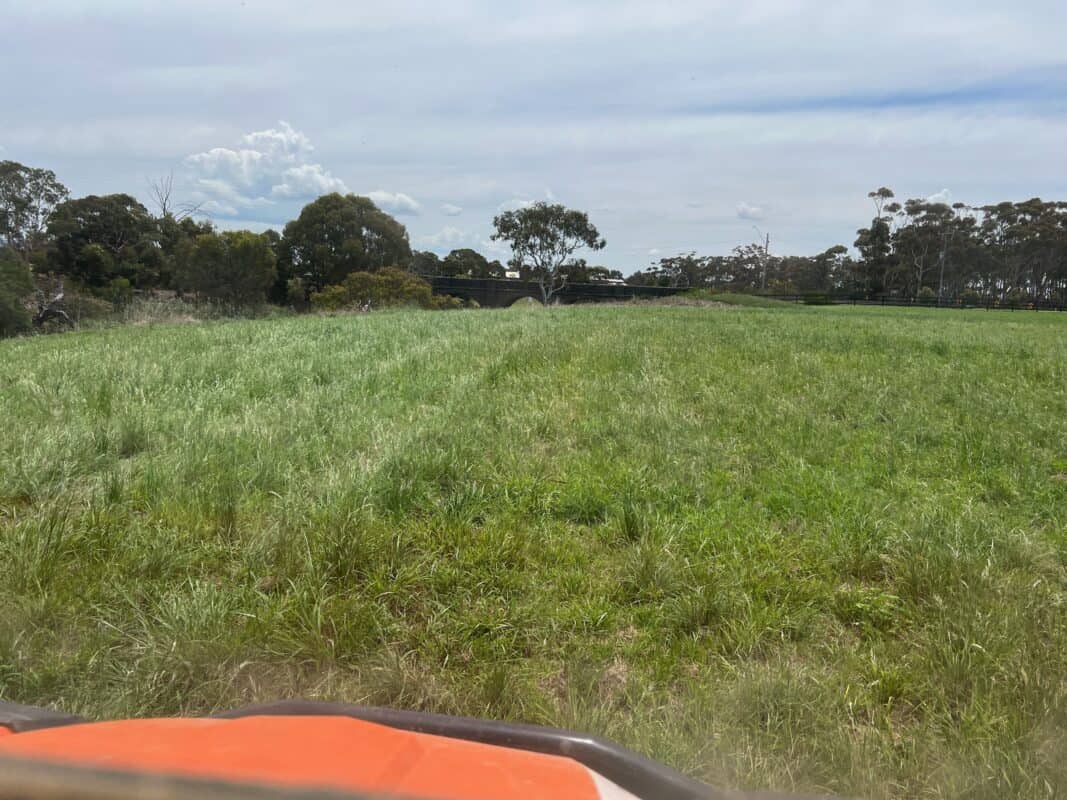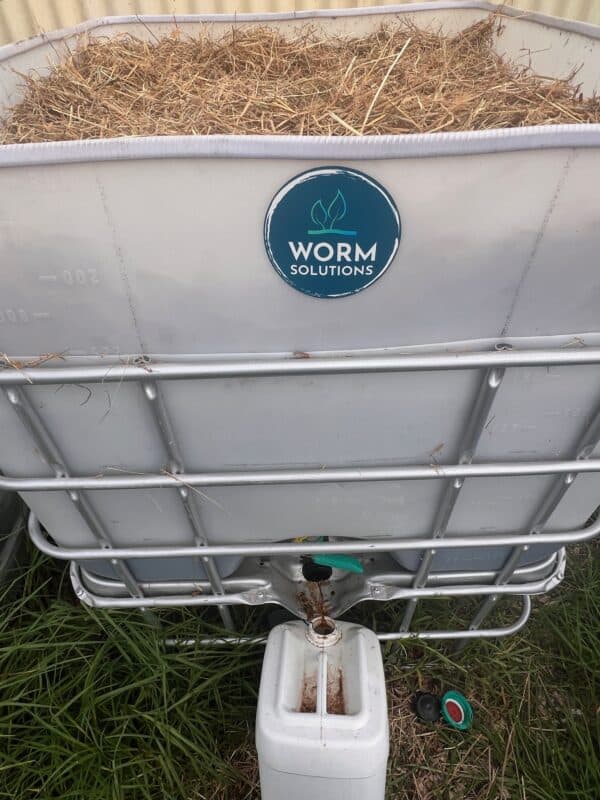
ABOVE: The herd out in one of their paddocks, grazing.
BELOW: The herd “locked up” in their central yard/loafing area.

FRIENDS, FORAGE & FREEDOM
The welfare of our horses is paramount. Keeping them in herds in larger paddocks, allows our horses to engage in species-specific behaviours, which is a key aspect of their wellbeing and welfare.
Allowing horses to live in a herd environment closely mimics their natural living conditions. Horses are inherently social animals, and living in a group enables them to exhibit natural behaviours such as grooming, play, foraging and grazing, and mutual protection. This social learning is crucial for young horses, as it teaches them how to interact appropriately with other horses and by extension, humans.
Herd living promotes mental wellbeing by reducing stress and anxiety. Horses that are isolated in individual paddocks can experience loneliness and boredom, which can lead to behavioural issues as well as increase the risk of stress-related illnesses. In contrast, a herd setting provides constant companionship and mental stimulation.
Physically, horses in a herd have more opportunities for movement and exercise, which contributes to their overall fitness and health and is a key factor in keeping the weight down of the very easy keeping Fjord.


LAND MANAGEMENT
Our pastures are a native grass mix that was sown prior to moving the horses onto the property. Prior to this, the paddocks were “typical” horse pastures of not a lot of grass, very compact, and plenty of weeds.
Our mix includes:
- Microlaena Stipoides var. Burra (Burra Weeping Grass)
- Dichanthium sericeum (Queensland Bluegrass)
- Anthosachne scabra (Native Wheatgrass)
- Rytidosperma (Wallaby Grass)
- Themeda triandra (Kangaroo Grass)
- Paspalidium Distans (Warrego Summer Grass)
- Bothriochloa macra (Red Grass)
- Brachiaria Milliformis (Arm Grass Millet)
At Tarcombe, we integrate regenerative farming principles into our land management. By rotating the herd across different pastures, we allow the land to recover and regenerate. This practice not only supports soil health and biodiversity but also ensures that our horses have access to fresh and nutritious forage. The rotational grazing pattern also help maintain the health of the pastures, promoting a sustainable and environmentally friendly farming system.
Our paddock setup is based on the Equicentral System, where there is a central loafing yard with the paddocks extending off that. This allows for easy rotational management of the paddocks for grazing, and gives us an area to “lock up” the horses when needed, off the pastures (see above image). Additionally to this, we also run a track system around the main paddocks, giving us the ability to keep the herds moving when the pastures are unsuitable for grazing (eg the summer dry, or super wet weather, or that beautiful fresh green spring grass).
We poo pick regularly – but not everyday. This gives time for the dung beetles to weave their magic. Horse poo is composted down, and then spread back on the paddocks when they’re resting which helps to provide nutrients, increases the mulch layer, and adds to the microbiome. We also run some large worm farms, with the worm “tea” sprayed on paddocks to further increase the soil microbiome.
Overtime, this approach should increase the biodiversity in our sward of native grass pastures, and reduce the unwanted weeds. The added bonus is that has decreased our hay bill significantly.
